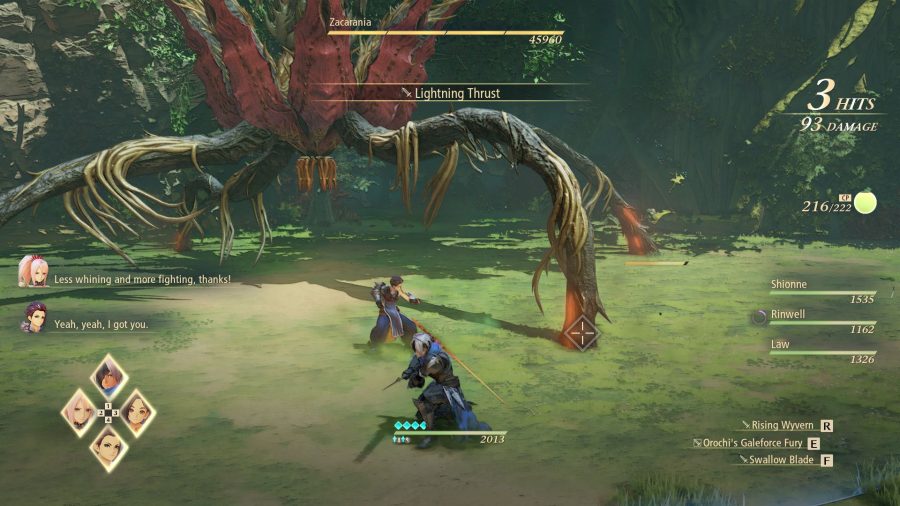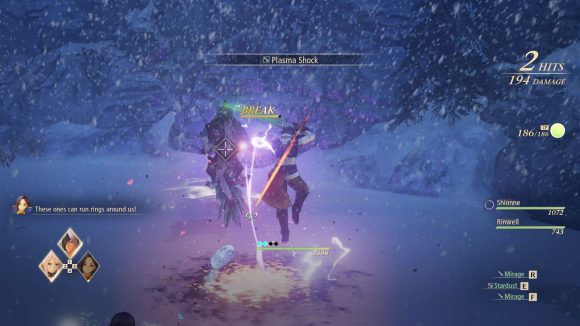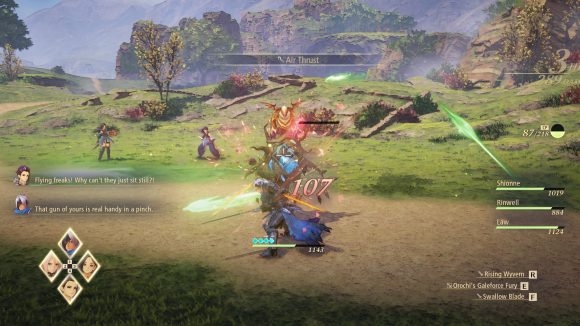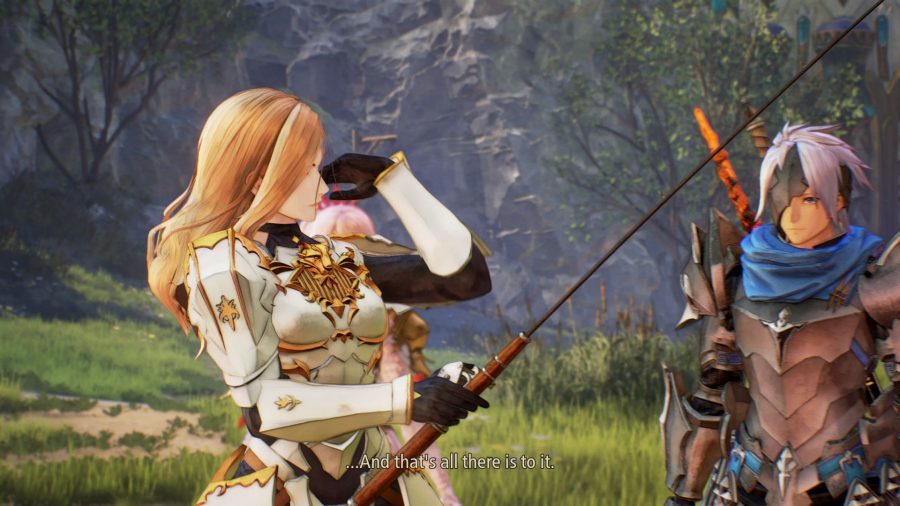Our Verdict
Bandai Namco combines excellent writing, stunning anime visuals, and a deep, rewarding combat system to make one of the best JRPGs of the year.
I’m going to go out on a limb and say that Tales of Arise could be the one that finally breaks into the big time. It’s not like the Tales series is exactly small, as it's been going for 26 years now, but it doesn’t really feel like it’s on the same level as some other long-lived JRPG series.
It’s a shame, too, because there are some incredible stories hidden away in many of the Tales games, and each one reinvents the combat system to keep things fresh. It’s a bit like an action-RPG take on Final Fantasy: none of the stories are linked, but the nuts and bolts feel familiar and comfy.
Tales of Arise takes the foundations that have underpinned the series, but dials them up so everything feels better than before. Combat is tighter, with more options and impressive fights than ever. The story adopts similar anime stylings to Scarlet Nexus and Code Vein, which makes this the third big Bandai Namco game to feel like it’s specifically aimed at me and the rest of the web's anime lovers. It’s also so much better-looking than the other games in the series that it’s hard to believe they’re related.
Tales of Arise kicks off by putting you in control of Iron Mask, a mysterious man with – you guessed it – a big iron mask. It’d be slightly more accurate to describe it as an iron helmet, but hey – his headwear, his rules.

Iron Mask is a man with no memory of who he used to be before he was enslaved by a bunch of well-armoured invaders called the Renans. The Renans hail from a planet you can see hanging in the sky, and invaded your planet (Dahna) three hundred years ago. Not only did they then enslave its entire population almost overnight, but they also implanted them with stones that drain their life force, thereby powering the Renans’ magicks.
You all look more or less the same, but Renans have three things you Dahnans don’t. They have the ability to cast magical Astral Artes, their eyes glow when they do so, and they have surnames. That last point may not sound like a big deal, but I bet you’d miss your surname if it was taken away from you. It’s a really effective indicator of just how much the Dahnans have been beaten down – in a single stroke, it leaves you in absolutely no doubt that everything is messed up here, and that something needs to change.
Besides having no memory, and therefore no real idea why he’s a slave, Iron Mask also has no sense of pain. This comes in handy when you meet Shionne, who suffers from the Curse of Thorns – a condition that causes anyone who touches her to be wracked with agony. On top of this, she’s being hunted because she conceals the Blazing Sword – a sword so obnoxiously powerful that it scorches the flesh of those who wield it.
I’m sure you can see where this is going. Because Iron Mask can’t feel pain, he can wield said sword, after which Shionne’s Healing Artes can repair the damage he can ignore but still suffers. It’s a complementary pairing, so the two decide to team up and take down the lords of the five regions of Dahnan to strike back at the Renans.
A genuinely wonderful relationship unfolds throughout the game from this initial match of convenience. The dynamic constantly shifts, with Shionne’s hard-hearted cynicism pairing harmoniously with Iron Mask’s almost newborn naiveté and hopeful nature. (For the record, Iron Mask’s helmet mask does eventually break in an immensely entertaining pattern, leaving his face half-covered, but allowing his anime-ass hair to flow freely.)
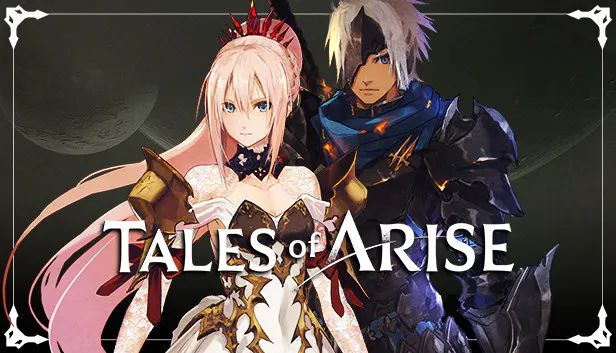 Tales of Arise Tales of Arise £49.99 Buy now Network N earns affiliate commission from qualifying sales.
Tales of Arise Tales of Arise £49.99 Buy now Network N earns affiliate commission from qualifying sales.
Tales of Arise’s story is excellent, aside from a couple of peculiar mis-steps, and it’ll have its hooks in you and pull you through to the end. Its world is equally fascinating; each region of Dahnan has its own lord, and each of those lords has their own way of oppressing the locals, as well as a particular, invariably devilish, version of dystopia to enforce. This means that Dahnan’s regions feel completely different from one another in a way that goes beyond their look – though of course, as in time-honoured JRPG tradition, there’s a desert area, an icy one, a green one, and so on.
Where the region in which you begin sees you fight slavery, abuse, aggressive food rationing, and regular beatings, the second is rife with treachery, backstabbing, and a group called the Snake Eyes, who watch every move from the shadows. Tales of Arise moves you between different regions in ways that the genre has used many times before, but the experience is so damn beautiful and well written that you can’t help letting it carry you to its end, enjoying the journey all the way.
Of course, it’s not like you’ll spend much time birdwatching. Combat is still the primary way in which you interact with Arise’s world, and it begins as a simple matter of button mashing, dodging, and deploying special abilities. As is often the case with Tales games, however, things get more complicated almost continually. You can choose to control any character you want, and each has their own playstyle. While Iron Mask (I do know his name, but I’m trying to avoid spoiling anything here) favours the sword, Shionne likes to shoot things, making her ideal for fighting off aerial foes. Other characters favour their fists, shields, and good old-fashioned magic.
Which you’ll favour is mostly a matter of personal preference, but mechanically each character is important. They all have a Boost Attack, which can be triggered in battle as they charge up, and which offer special effects such as bringing down aerial enemies, stopping charge attacks, interrupting magic, or slowing your foes. Knowing when to use these is essential in harder difficulties and late-game fights, which is a nice tactical wrinkle. Overall, Arise’s combat feels superior to anything Tales has managed so far.
And – crucially for an anime game – it manages to look stylish from the get-go. It’s common in the opening stages of an action-RPG to be stuck looking like you’ve only just learned to hold a sword, but that’s not the case here. You’ll be stringing together 100-hit combos early on, each attack flowing smoothly into the next, and each combatant looking like a model as they unleash their flash and fury.
This combines with the genuinely entertaining writing, which packs some truly harrowing scenes, and some of the nicest animations I’ve seen to make for a Tales game that’s head and shoulders above the rest. Long-time fans will inevitably continue to argue about their favourite, but I don’t think any other game in the series has the same overall appeal as Arise. It’s easy to see it becoming Tales’ gateway game for newcomers.
Read more: The best RPG games on PC
Personally, I’m absolutely smitten with Tales of Arise, and what Bandai Namco has achieved with it skyrockets it into GOTY territory for me. It’s yet another game to demonstrate the studio’s awesome prowess in anime aesthetics and storytelling, while also just feeling damn good to play – a balance that’s rarely been struck this well in the past. Go and play Tales of Arise. You’ll thank me later.

